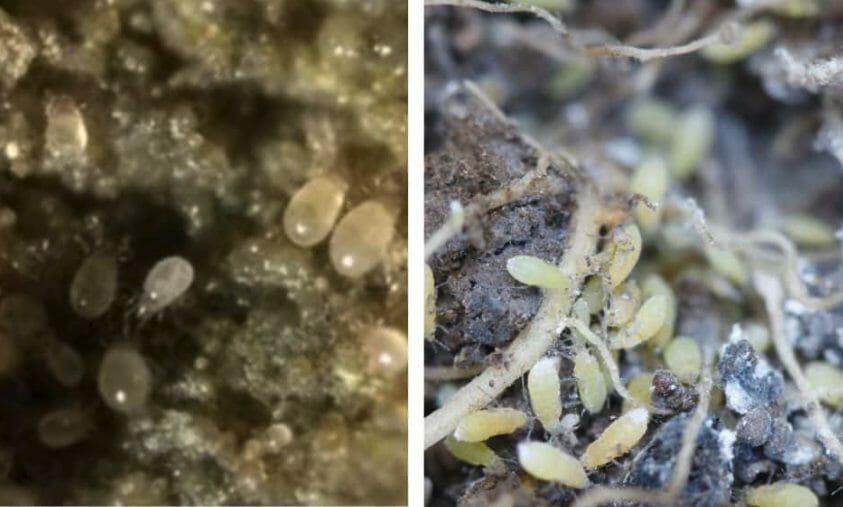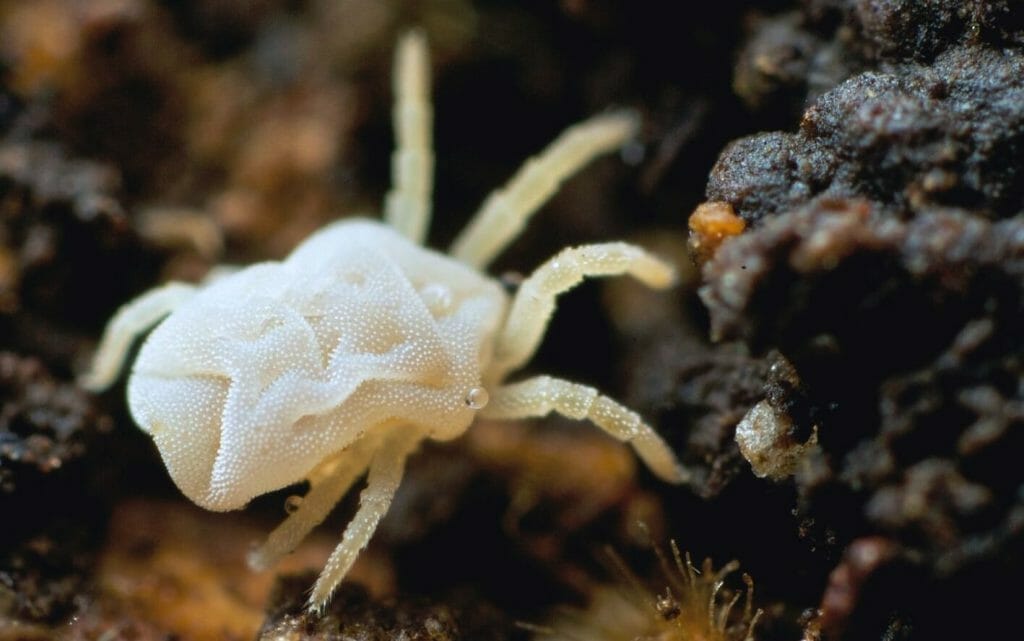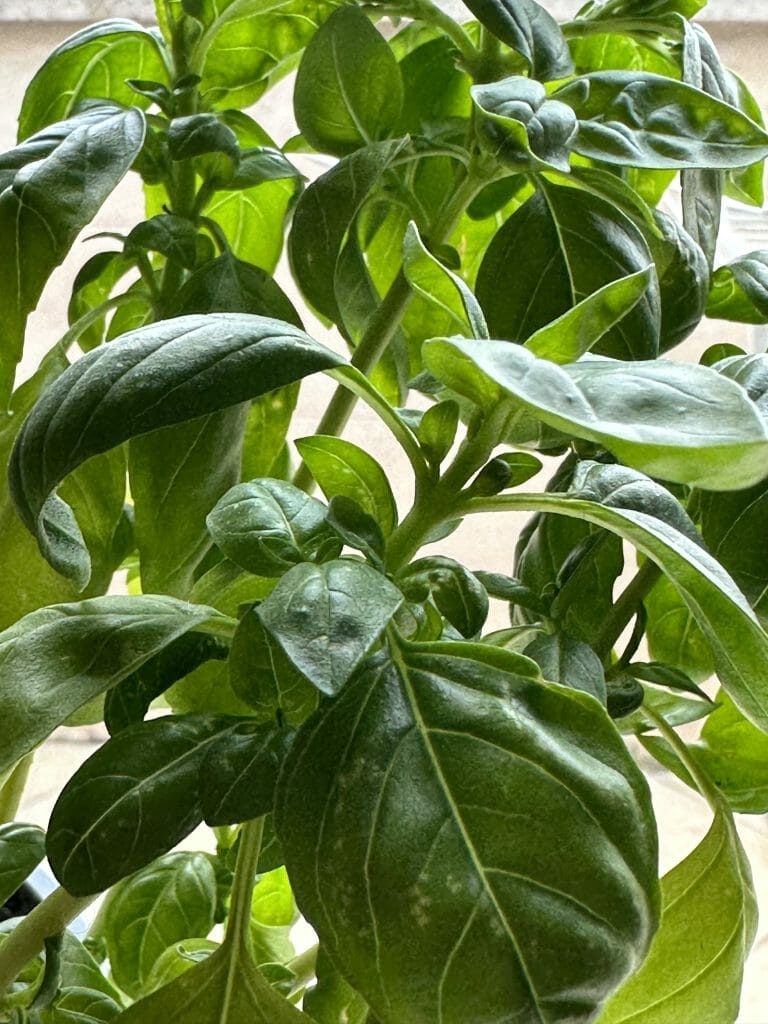The Shocking Truth About Root Aphids vs Soil Mites in Your Garden

In the diverse gardening world, myriad organisms coexist, each playing a unique role in the ecosystem. Among these, root aphids and soil mites often stand out, not for their size, but for the confusion they bring to gardeners and plant enthusiasts alike.
These tiny inhabitants of our gardens might seem inconsequential at a cursory glance, but understanding their distinct roles and impacts is paramount for anyone keen on maintaining a healthy garden.
Root aphids, as their name suggests, are pests that target the roots of plants, often causing significant damage and leading to weakened disease-prone plants.
Their subtle presence beneath the soil makes them particularly challenging to detect, leading many to overlook their detrimental effects. On the other hand, soil mites are beneficial insects that contribute positively to the soil ecosystem.
They aid in breaking down organic matter, ensuring a rich and fertile soil for plants to thrive. The contrasting roles of these two organisms highlight the importance of accurate identification.
Recognizing the benefits of soil mites and the dangers posed by root aphids is crucial for effective garden management, ensuring that plants remain healthy and vibrant.
Root Aphids Overview

Often lurking unnoticed beneath the soil surface, root aphids are a silent menace to many gardeners and plant enthusiasts. Unlike their above-ground counterparts, which feed on plant sap from stems and leaves, root aphids target the roots of plants. These tiny pests belong to the Aphididae family and are closely related to the more commonly known greenfly or blackfly. However, their subterranean lifestyle makes them particularly challenging to detect and manage.
Appearance and Behavior:
At first glance, root aphids might be mistaken for other soil-dwelling pests due to their minuscule size. Adult root aphids with soft, pear-shaped bodies are typically white, yellow, or brown.
They lack the long, siphon-like tubes (cornicles) that many above-ground aphids possess. These pests are wingless initially, but when the population becomes dense or the plant becomes stressed, winged forms can develop, allowing them to disperse and infest other plants.
Their life cycle is rapid, with females giving birth to live young without the need for mating. This rapid reproduction rate, combined with their concealed habitat, means that an aphid infestation can escalate quickly, often before a gardener realizes a problem.
Impact on Plants:
The damage caused by root aphids is twofold. Firstly, as they feed on the roots, they extract vital nutrients, leading to stunted growth, yellowing of leaves, and overall plant weakness. The symptoms often resemble those of nutrient deficiencies, making diagnosis tricky.
Secondly, their feeding creates wounds in the roots, making plants more susceptible to diseases and fungal infections. Over time, a severe infestation can lead to root rot and the plant’s eventual death.
The signs of aphid damage, such as a weakened plant structure and reduced vigor, are often only visible when the infestation is advanced. Therefore, regular inspection of the soil and roots, especially when plants show unexplained signs of stress, is crucial for early detection and management.
Soil Mites Overview

Soil mites are microscopic creatures that inhabit the rich, dark world beneath our feet. As part of the vast micro-ecosystem of the soil, they play a pivotal role in maintaining its health and fertility. These tiny arachnids, often overlooked for their minuscule size, are an integral part of the soil food web, interacting with various organisms from bacteria to fungi to plants.
Appearance and Behavior:
Belonging to the Arachnid class, soil mites have eight legs and come in various shapes and colors, ranging from translucent white to darker shades of brown or black.
Their bodies are segmented, and while they are generally too small to be seen with the naked eye, one can appreciate the diversity in their forms under a microscope. Some have elongated bodies, while others are more rounded.
Their environment largely dictates their behavior and specific roles in the soil ecosystem. Predatory mites actively hunt smaller organisms, while detritivorous mites feed on decaying organic matter. Their presence in the soil is often an indicator of their health.
A soil rich in organic matter and microbial activity typically has a higher population of soil mites. They thrive in environments with a balance of moisture and aeration, making them common inhabitants of well-maintained gardens and agricultural lands.
Benefits to the Soil:
Soil mites are often considered beneficial insects due to their myriad advantages to the soil. Their primary role is in decomposition.
As they feed on decaying plant matter, fungi, and other smaller soil organisms, they help break down complex organic compounds into simpler forms.
This process releases essential nutrients into the soil, making them available for plants to absorb. Furthermore, their constant movement and burrowing behavior aid in soil aeration, ensuring plant roots receive adequate oxygen.
The diverse soil fauna, including mites, often indicates a balanced and healthy soil ecosystem. Recognizing the benefits of soil mites is crucial for gardeners and farmers alike, as these tiny creatures significantly contribute to soil fertility and plant health.
Side-by-side comparison of root aphids and soil mites
| Feature/Aspect | Root Aphids | Soil Mites |
|---|---|---|
| Appearance | – Soft-bodied, pear-shaped – White, yellow, or brown | – Eight-legged arachnids – Translucent to dark shades |
| Size | – Typically larger than soil mites – Visible to the naked eye in large numbers | – Microscopic, requiring magnification for detailed observation |
| Habitat | – Primarily on plant roots | – Throughout the soil, especially in organic-rich areas |
| Behavior | – Feed on plant roots – Can produce winged forms for dispersion | – Range from predatory to detritivorous – Aid in soil aeration |
| Impact on Plants | – Cause root damage – Weaken plants, making them susceptible to diseases | – Beneficial; aid in decomposition and nutrient cycling |
| Relation to Plants | – Parasitic; feed on plant sap | – Symbiotic; help in breaking down organic matter |
| Control Measures | – Insecticidal soaps, beneficial nematodes | – Generally not controlled as they are beneficial |
This table concisely compares root aphids and soil mites, highlighting their distinct characteristics and roles in the garden ecosystem. Understanding these differences is crucial for effective garden management and ensuring the health and vitality of plants.
How to Identify Root Aphids
Root aphids can be particularly tricky to identify unlike their above-ground counterparts due to their subterranean habitat. However, understanding the signs of their presence is crucial for the timely management and prevention of extensive damage to plants.
A root aphid infestation can be subtle at first, but as their population grows, the symptoms become more pronounced, affecting the overall health and vitality of the plant.
The first and most evident sign of a root aphid infestation is the visible distress in plants.
Aphid symptoms often manifest as wilting, yellowing of leaves, or stunted growth. These symptoms can easily be mistaken for water or nutrient deficiencies.
However, upon closer inspection of the roots, one might notice a sticky, sugary substance known as honeydew. This excretion, a byproduct of their feeding, can lead to the growth of sooty mold, further compromising the plant’s health.
The roots might appear swollen or have galls, directly resulting from root damage caused by the aphids’ feeding. In severe infestations, the roots may have a woolly appearance due to the presence of the aphids themselves and their white wax coating.
Visual cues are paramount in identifying root aphids. Gently uprooting the plant or inspecting the sides of the pot can reveal these pests. They can vary in color – from white and brown to almost transparent, making them slightly challenging to spot against the backdrop of soil. However, their clustered presence and movement give them away.
Another common sign is the presence of winged aphids around the plant or on the soil surface, indicating a mature infestation ready to spread to other plants.
Regular inspection, especially when plants show unexplained signs of stress, combined with a keen understanding of the signs of aphid infestation, can aid gardeners in the early detection and management of these stealthy pests.
How to Identify Soil Mites
Soil mites, the often-overlooked inhabitants of our gardens, play a pivotal role in maintaining the health and balance of the soil ecosystem.
These tiny arachnids, while microscopic, have a significant impact on soil health, aiding in decomposition and nutrient cycling. Identifying them can be challenging due to their size, but understanding their presence and behavior can provide insights into the overall health of the garden’s soil.
The first step in identifying soil mites is through visual cues. While they are generally too small to be seen with the naked eye, a simple magnifying glass can reveal their presence.
By taking a small soil sample from the garden and placing it on a white sheet of paper, one can observe tiny, moving specks – these are often soil mites.
Their appearance can vary, with some being translucent and others having darker shades. Their eight-legged structure, typical of arachnids, distinguishes them from other soil microorganisms. Observing the soil, especially after a light watering or during early morning hours, can also reveal their movement on the soil surface.
They are particularly active in moist conditions, making these times ideal for observation.
Soil mites’ behavior in the soil is another indicator of their presence. They are voracious feeders, consuming decaying organic matter, fungi, and other smaller soil organisms. Areas rich in organic matter, like compost piles or mulched garden beds, are hotspots for soil mite activity.
Their presence indicates a thriving soil fauna, a sign of a balanced and healthy soil ecosystem. Recognizing the signs of soil mites, understanding their behavior, and appreciating their role as beneficial insects can help gardeners ensure their gardens remain vibrant and productive. Regularly checking the soil, especially in organic-rich areas, and fostering an environment conducive to these beneficial creatures can go a long way in promoting garden health.
Benefits of Soil Mites
Soil mites, while minuscule, play a colossal role in ensuring the health and vitality of our gardens. These tiny arachnids, often unnoticed and underappreciated, are the unsung heroes of the soil ecosystem. Their presence and activity have a cascading positive impact on the soil and the entire garden, from the smallest plants to the largest trees.
One of the primary roles of soil mites is in decomposition. As they navigate the soil, they feed on decaying organic materials, such as fallen leaves, dead plants, and other organic detritus. This feeding process is essential for separating complex organic compounds into simpler forms. As they consume and digest these materials, they release essential nutrients into the soil.
This nutrient cycling ensures that plants have a steady supply of vital minerals and elements necessary for their growth. Without the diligent work of soil mites, these organic materials would accumulate, leading to an imbalance in the soil ecosystem. Moreover, their feeding activity aids in soil aeration. As they move and burrow, they create tiny channels that allow air to penetrate deeper into the soil, ensuring that plant roots receive adequate oxygen.
Beyond decomposition, soil mites also play a role in controlling harmful pests. Some species of soil mites are predatory and feed on nematodes, fungus gnats larvae, and other harmful pests.
Their presence can act as a natural pest control, reducing the need for chemical interventions. The advantages of soil mites are manifold, from enriching the soil to promoting overall soil health and acting as beneficial insects that keep potential threats in check.
Recognizing and fostering their presence in gardens is a testament to a gardener’s commitment to natural and sustainable gardening practices. After all, a garden teeming with life, both visible and microscopic, is a sign of a healthy and thriving ecosystem.
Dealing with Root Aphids
Root aphids, the silent assailants of the plant world, can wreak havoc on gardens if left unchecked. Their subterranean nature makes them particularly challenging to detect and manage. However, with a combination of preventive measures and targeted treatments, gardeners can effectively combat these pests and ensure the health and vitality of their plants.
Natural Methods of Control:
- Beneficial Nematodes: These microscopic worms are natural predators of root aphids. Once introduced to the soil, they seek out and destroy aphid larvae, reducing the population. They are safe for plants and do not harm beneficial insects.
- Diatomaceous Earth: A natural powder made from fossilized aquatic organisms, it acts as a desiccant, drying out the aphids. Sprinkling it around the base of plants can deter aphids from infesting the roots.
- Regular Inspection: Regularly checking the roots, especially when repotting or transplanting, can help in early detection and removal of aphids. Gently washing the roots can dislodge the pests.
Chemical Methods of Control:
- Insecticidal Soaps: These specially formulated soaps can be applied directly to the affected areas. They work by breaking down the aphids’ protective outer layer, leading to dehydration and death. It’s essential to follow the manufacturer’s instructions for effective results.
- Systemic Insecticides: These are absorbed by plants and target pests that feed on them. While effective, they should be used as a last resort due to their potential impact on beneficial insects.
Preventive Measures:
- Healthy Soil: Maintaining a healthy soil ecosystem with beneficial microbes can deter aphid infestations. Regularly adding compost and organic matter can boost soil health.
- Avoid Overwatering: Moist conditions are favorable for aphid proliferation. Ensuring proper drainage and avoiding waterlogged soil can reduce the chances of infestation.
In conclusion, while root aphids are formidable foes, a combination of vigilance, natural remedies, and targeted treatments can effectively manage and eliminate them. Prioritizing natural methods and using chemicals judiciously ensures that the garden remains a safe and thriving space for all its inhabitants.
Conclusion
In the intricate tapestry of garden ecosystems, every organism plays a pivotal role, no matter how small. While seemingly insignificant, root aphids and soil mites profoundly impact our gardens’ health and vitality. Distinguishing between these two entities is not just a matter of academic interest but is crucial for effective garden management.
Soil mites, often the unsung heroes of the soil world, contribute immensely to maintaining soil health. Their relentless work in breaking down organic matter, aiding in nutrient cycling, and promoting soil aeration ensures that plants have fertile ground to thrive in.
On the other hand, root aphids, the silent assailants, can compromise the very foundation of plants by feeding on their roots. Their presence, if unchecked, can lead to weakened plants, making them susceptible to diseases and other pests.
Effective pest management requires that gardeners recognize these pests early on and take appropriate measures to curb their proliferation. Understanding the dichotomy between these two organisms – beneficial and detrimental – is fundamental to ensuring garden health. As we conclude, it becomes evident that knowledge, vigilance, and timely action are the cornerstones of a thriving garden, free from the menace of harmful pests.






